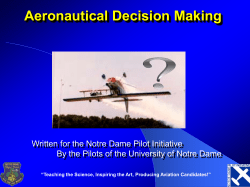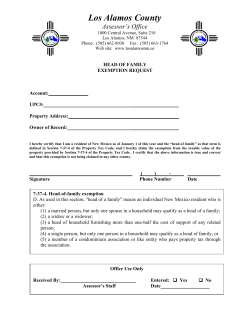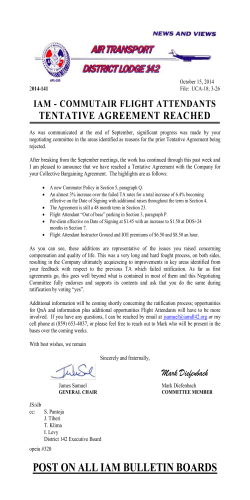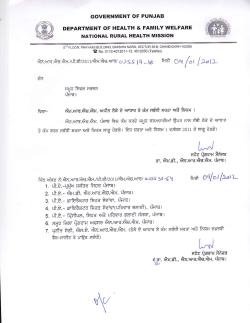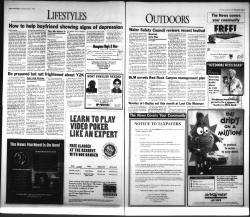
Document 431462
KH~LLERAND
.
HECKMAN LLP
Serving Business through Law and Science®
1001 G Street, N.W.
Suite 500 West
Washington, D.C. 20001
tel. 202.434.4100
fax 202.434.4646
Writer's Direct Access
Greg Kunkle
October 2, 2014
(202) 434-4178
kunkl e@khla w. com
U.S. Department ofTransportation, Docket Operations
West Building Ground Floor, Room w12-140
1200 New Jersey Avenue, SE., Washington, DC 20590
Re:
2012 FAA Reform Act Section 333 Exemption Request
Dear Sir or Madam:
Attached please fmd Chevron USA, Inc.'s request for an exemption from the listed
Federal Aviation Regulations to allow commercial operation of its Small Unmanned Aircraft
Systems ("sUASs") for aerial imaging for safety and monitoring of controlled access oil and gas
facilities. This exemption request is exclusively for the use of the UAS manufactured by
Skycatch, Inc., a San Francisco based company.
Also attached to this letter is the Skycatch UAS Flight Manual, which outlines the
operating requirements, limitations, and technical specifications for the Skycatch system.
Chevron has reviewed this Manual and has found it to be acceptable for sUAS operations on its
secure project sites. Applicant submits this manual as a Confidential document under 14 CFR
11.35 (b) as the entire manual contains proprietary information that the applicant has not and will
not share with others. The Manual contains operating conditions and procedures that are not
available to the public and are protected from release under the Freedom oflnformation Act 5
USC 552 et. seq.
Thank you for your time and consideration, and please let me know if you have any
questions.
Sincerely,
./'?'~,-/··
//"/
/.
>'l~~.
~//_.·"
//f!/~~,,··"
.,-
g ry
nkle
Keller and Heckman LLP
Counsel for Chevron USA, Inc.
~~J),.
Gabriel Dobbs
Skycatch, Inc.
Washington, D.C.
This .document was delivered electronically.
Brussels
San Francisco
www.khlaw.com
Shanghai
1001 G Street, N.W.
Suite 500 West
Washington, D.C. 20001
tel. 202.434.4100
fax 202.434.4646
Greg Kunkle
Writer's Direct Access
October 2, 2014
(202) 434-4178
kunkle@ kh I aw.co m
U.S. Department ofTransportation
Docket Management System
1200 New Jersey Ave., SE
Washington, DC 20590
Re: Exemption Request Section 333 ofthe FAA Reform Act and Part 11 ofthe Federal
Aviation Regulations from 14 C.F.R. 61.113 (a) & (b); 91.1 03(b); 91.119; 91.121;
91.151(a); 91.405 (a); 91.407(a) (1); 91.409 (a) (2); 91.417 (a) & (b).
Dear Sir or Madam:
Pursuant to Section 333 ofthe FAA Modernization and Reform Act of2012 (the
"Reform Act") and 14 C.F.R. Part 11, Chevron USA Inc. ("Chevron") 1 hereby applies for
an exemption from the Federal Aviation Regulations ("F ARs") listed in Section I below
to allow commercial operation of its Small Unmanned Aircraft Systems ("sUASs") for
aerial imaging and safety and monitoring of controlled access oil and gas facilities, 2 so
long as such operations are conducted within and under the conditions outlined herein or
as may be established by the FAA as required by Section 333 of the Reform Act.
As detailed in this document and the attached Flight Manual, the requested
exemption would permit the operation ofsUAS under controlled conditions in airspace
that is 1) limited, 2) predetermined, 3) controlled as to access, and 4) would provide
safety enhancements to the already best practices safety protocols followed by Chevron at
each one of its oil and gas facilities. Approval of this exemption would thereby enhance
safety and fulfill the Secretary ofTransportation's (the FAA Administrator's)
responsibilities to " ... establish requirements for the safe operation of such aircraft systems
in the national airspace system." Section 333(c) ofthe Reform Act.
1 Chevron is a subsidiary of Chevron Corporation, which is one of the world's largest energy companies
with oil and natural gas exploration, production, pipeline transportation, refining, and marketing activities
worldwide.
2 Such facilities might include oil and gas exploration and production fields, offshore platforms, refineries,
etc., but would not include facilities open to the public.
The name and address ofthe applicant is:
Chevron USA Inc.
Kenneth Lewis
PH: 661-632-1324
Email: [email protected]
Address: 9525 Camino Media, Bakersfield, CA 93311
Questions regarding this request should be forwarded to:
Greg Kunkle
Keller and Heckman LLP
PH: 202-434-4178
Email: [email protected]
Address: 1001 G Street NW, Suite 500 West, Washington, D.C. 20001
I.
REGULATIONS FROM WHICH THE EXEMPTION IS REQUESTED
o
o
o
o
o
o
o
o
o
14 C.F.R. 61.113 (a)
14 C.F.R. 91.103
14 C.F. R. 91.119
14 C.F.R. 91.121
14 C.F.R. 91.151 (a)
14 C.F.R. 91.405 (a)
14 C.F.R. 91.407 (a)
14 C.F.R. 91.409 (a)
14 C.F.R. 91.417 (a)
& (b)
(1)
(2) .
& (b)
II. STATUTORY AUTHORITY FOR EXEMPTIONS
The Federal Aviation Act expressly grants the FAA authority to issue exemptions.
This statutory authority includes exempting civil aircraft, as the term is defined under
§40101 ofthe Act, including sUASs, from the requirement that all civil aircraft must
have a current airworthiness certificate.
The Administrator may grant an exemption from a requirement of a regulation
prescribed under subsection (a) or (b) ofthis section or any sections 44702-44716 ofthis
Title if the Administrator finds the exemption in the public interest. 3
Section 333(b) ofthe Reform Act assists the Secretary in determining whether
sUASs may operate in the National Airspace System ("NAS") without creating a hazard
to the user, the public, or a threat to national security. In making this determination, the
Secretary must consider:
3
•
The sUAS's size, weight, speed, and operational capability;
•
Whether the sUAS operates within the visual line of sight ofthe operator;
See 49 U.S.C. §4470l(f) See also 49 USC §447ll(a); 49 USC §44704; 14 CFR §91.203(a)(l).
2
•
Whether the sUAS operates outside ofhighly populated areas and away from
close proximity to airports.
If the Secretary determines that a sUAS "may operate safely in the national
airspace system, the Secretary shall establish requirements for the safe operation of such
aircraft in the national airspace system."4
Chevron's proposed sUASs are multi-rotor vehicles, weighing 10 or fewer lbs.
including payload. They will operate under normal conditions at a speed of no more than
50 mph and have the capability to hover, and move in the vertical and horizontal plane
simultaneously. They will operate only in line of sight and will operate only within the
sterile area described in the Confidential Skycatch Flight Manual, attached as Exhibit 1
(hereinafter "the Manual"). Such operations will ensure that the sUASs will "not create a
hazard to users of the national airspace system or the public." 5
Given the small size of the sUASs involved and the area within which they will
operate, Chevron's application falls squarely within the zone of safety (an equivalent
level of safety) in which Congress envisioned that the FAA must, by exemption, allow
commercial operations ofsUASs to commence. Also due to the small size ofthe sUASs
and the low altitudes and limited areas in which Chevron's sUASs will operate, approval
ofthe application presents no national security issue.
Given the clear direction in Section 333 of the Reform Act, the authority
contained in the Federal Aviation Act, as amended; the strong equivalent level of safety
surrounding the proposed operations, and the significant public benefit, including
enhanced safety, the grant ofthe requested exemptions is in the public interest.
Accordingly, Chevron respectfully requests that the FAA grant the requested exemption
~~~~~
.
III. PUBLIC INTEREST
This exemption application is expressly submitted to fulfill Congress' goal in
passing Section 333(a) through (c) ofthe Reform Act. This law directs the Secretary of
Transportation to consider whether certain unmanned aircraft systems may operate safely
in the NAS before completion ofthe rulemaking required under Section 332 ofthe
Reform Act. By granting an exemption the FAA will fulfill Congress's intent of allowing
UASs to operate with significant safety precautions in low risk environments.
The use of sUASs can significantly promote safe and effective oil and gas
operations. For example, the use ofsUASs can reduce the risk to workers while
inspecting, surveying, or monitoring wells, pipelines, and other energy facilities. sUASs
can inspect, photograph, and collect data on inaccessible areas that otherwise would
require worker inspection, in addition to providing facility security, spill, and emergency
response reconnaissance. sUASs can also provide high resolution aerial imagery,
elevation measurement, mapping, and thermal imagery data. Reducing manned flight
and human inspection of such sites through sUAS use for site imaging will reduce risk to
workers and ground personnel and create an improved safety operating environment.
4
5
Id. §333(c).
Reform Act Section 333 (b).
3
Additionally, sUASs could reduce the use of fixed-wing aircraft to monitor sites.
The sUASs Chevron proposes to fly in this application weigh less than ten pounds, and
carry no combustible material on board, as opposed to much larger conventionally
powered aircraft that Chevron currently uses to monitor its facilities. Reducing the use of
manned aircraft, or supplementing such flights through sUAS operations, presents the
potential for a safety increase for Chevron's workers and the public.
Lastly, sUASs reduce the environmental impact by dramatically decreasing the
energy used for aerial imaging and data collection over an oil and gas site. Operation of
lightweight sUASs powered by rechargeable lithium ion batteries offers improved
efficiencies as compared to the operation of other aircraft and vehicles that consume
gasoline and present a significantly louder noise signature.
IV. EQUIVALENT LEVEL OF SAFETY
Chevron proposes that the exemption requested herein apply to civil aircraft that
have the characteristics and that operate with the limitations listed herein. These
limitations provide for at least an equivalent or even higher level of safety to operations
under the current regulatory structure because the proposed operations represent a safety
enhancement to the already safe protocols followed at oil and gas facilities and imaging
and surveying operations conducted with other conventional aircraft.
Chevron will be bound by the following limitations when conducting its sUAS
operations under this FAA issued exemption:
1. The sUAS will weigh less than 10 pounds.
2. Flights will be operated within visual line of sight of a pilot and/or observer.
3. Maximum total flight time for each operational flight will be 30 minutes. The UAS
calculates battery reserve in real time, and will return to its ground station with at
least 20% battery power reserve should that occur prior to the 30 minute limit.
4. Flights will be operated at an altitude of no more than 400 feet AGL.
5. Minimum crew for each operation will consist ofthe trained sUAS Pilot who will
keep the sUAS within his visual line of sight at all times and one visual observer.
6. The sUAS Pilot will be trained in flight, operations, and safety procedures as detailed
in the Flight Manual.
7. sUAS Pilot will be Pilot in Command (PIC).
8. The PIC will hold at least a private pilot certificate and at least a current third-class
medical certificate.
9. The sUAS will only operate within a confined "Sterile Area" as defined in the
Manual. The Manual also requires the establishment of a "Security Perimeter" for the
flight operations area.
10. Notification of flight operations to personnel at the facility will be made through
posted signs and onsite Job Safety Analysis meetings.
11. Notification of flight operations to the operator of Chevron's manned aerial patrol
flights prior to flight commencement.
12. The UAS will not be operated at a distance from clouds less than 500' below or 2000'
horizontal, or when visibility is less than 3 statute miles.
13. The operator will obtain a Certificate of Waiver or Authorization (COA) from the
FAA's Air Traffic Organization (ATO) prior to conducting any operations.
4
14. Pilot will have been trained in operation ofUASs generally and received up-to-date
information on the particular sUAS to be operated as required in the Manual.
15. Operations will be limited to Chevron properties at which third party access is
controlled. A buffer will be provided as described in the Manual.
16. Ifthe sUAS loses communications or loses its GPS signal, it will have capability to
return to a pre-determined location within the Security Perimeter and land.
17. The sUAS will have the capability to abort a flight in case ofunpredicted obstacles or
emergencies. The UAS will host an on-board parachute that can be deployed in the
event of motor loss or emergency.
18. The radio frequency spectrum used for operation and control ofthe UAS will comply
with the rules and regulations ofthe Federal Communications Commission (FCC).
V. DESCRIPTION OF SPECIFIC REGULATIONS
A. 14 C.F.R. §61.113 (a) & (b): Private pilot privileges and limitations: Pilot in
command
Sections 61.113 (a) & (b) limit private pilots to non-commercial operations.
Chevron proposes that its sUAS PIC will hold at least a private pilot certificate and at
least a current third-class medical certificate. Because the sUAS will not carry a pilot or
passengers, the proposed operations can achieve the equivalent level of safety of current
operations by requiring the PIC operating the aircraft to have a private pilot's license
rather than a commercial pilot's license to operate this sUAS. Unlike a conventional
aircraft that carries the pilot and passengers, the sUAS is remotely controlled with no
living thing on board. The areas of operation will be restricted to Chevron properties at
which third party access is controlled, and all flights are planned and coordinated in
advance as set forth in the Manual. The level of safety provided by the requirements
included in the Manual exceeds that provided by a single individual holding a
commercial pilot's certificate operating a conventional aircraft. The risks associated with
the operation ofthe sUAS are so diminished from the level of risk associated with
commercial operations contemplated by Part 61 when drafted, that allowing operations of
the sUAS as requested with a private pilot as the PIC exceeds the present level of safety
achieved by 14 C.F.R. §61.113 (a) & (b).
B. 14 C.F.R. §91.103: Preflight action
This regulation requires each pilot in command take certain actions before flight
to insure the safety of flight. An exemption is needed from this requirement as the PIC
will take separate preflight actions, including checking for weather conditions, checking
flight battery requirements, checking takeoff and landing distances, etc. These actions
will provide an equivalent level of safety.
C. 14 C.F.R. §91.119: Minimum safe altitudes
Section 91.119 establishes safe altitudes for operation of civil aircraft. Section
91.119 (d) allows helicopters to be operated at less than the minimums prescribed,
provided the person operating the helicopter complies with any route or altitudes
5
prescribed for helicopters by the FAA. This exemption is for a multi-rotor craft that flies
similarly to a helicopter, with vertical take-off and vertical landing, which will operate at
altitudes up to 400' AGL, so an exemption may be needed to allow such operations. As
described in the Manual, the sUAS will never operate at altitude higher than 400' AGL
and will be limited to the area with the security perimeter, where buildings and people
will not be exposed to operations without their notification as described herein.
The equivalent level of safety will be achieved given the size, weight, speed ofthe
sUAS as well as the location where it is operated. Flights will over Chevron properties at
which third party access is controlled. Because of the advance notice to onsite personnel
as outlined in the Manual, all affected individuals will be aware ofthe planned flight
operations. Compared to flight operations with aircraft or rotorcraft weighing far more
than the maximum 10 lbs. proposed herein and flammable fuel, any risk associated with
Chevron's operations is far less than those presently presented with conventional aircraft.
In addition, the low-altitude operations ofthe sUAS will ensure separation between these
sUAS operations and the operations of conventional aircraft that must comply with
Section 91.119. Notification of flight operations will be provided to the operator of
Chevron's manned aerial patrol flights, which have a low altitude waiver allowing for
flight below 500' AGL.
D. 14 C.F.R. §91.121: Altimeter settings
This regulation requires each person operating an aircraft to maintain cruising
altitude by reference to an altimeter that is set " ... to the elevation of the departure airport
or an appropriate altimeter setting available before departure." As the sUAS may not
have a barometric altimeter, but instead a GPS altitude read out, an exemption may be
needed. An equivalent level of safety will be achieved by the operator, pursuant to the
Manual and Safety Check list, confirming the altitude of the launch site shown on the
GPS altitude indicator before flight.
E. 14 C.F.R. §91.151 (a): Fuel requirements for flight in VFR conditions
Section 91.151 (a) outlines fuel requirements for beginning a flight in VFR
conditions. Chevron's sUAS is limited to operations in sterile and controlled
environments as outlined in the Manual, and has a limited range and flight time which
require an exemption from 14 C.F.R. 91.151(a).
The battery powering the sUAS provides approximately 35 minutes of powered
flight. To meet the 30 minute reserve requirement in 14 C.F.R. §91.151, sUAS flights
would be limited to approximately 5 minutes in length. Given the limitations on the
sU AS's proposed flight area and the location of its proposed operations within a
predetermined area, a longer time frame for flight in daylight or night VFR conditions is
reasonable.
Chevron believes that an exemption from 14 C.F.R. §91.151(a) falls within the
6
scope of prior exemptions. 6 Operating the sUAS, in a controlled area with less than 30
minutes of reserve fuel, does not engender the type of risks that Section 91.151 (a) was
intended to alleviate given the size and speed ofthe sUAS. Additionally, limiting sUAS
flights to 5 minutes would greatly reduce the utility for which the exemption will be
granted.
An equivalent level of safety can be achieved by limiting flights to 30 minutes, or
enough battery reserve to ensure that the sUAS lands at the ground station with at least
20% of battery power (as determined by the onboard monitoring system and PIC),
whichever happens first. Because of the limited operating area under which sUAS flights
will be conducted, this restriction will be more than adequate to ensure return of the
sUAS to its planned landing zone.
Similar exemptions have been granted to other operations, including Exemptions
2689F, 5745, 10673, and 10808.
F. 14 C.F.R. §91.405 (a); 407 (a)(l); 409 (a)(2); 417 (a) & (b): Maintenance
inspections
These regulations require that an aircraft operator or owner "shall have that
aircraft inspected as prescribed in subpart E ofthis part and shall between required
inspections, except as provided in paragraph (c) ofthis section, have discrepancies
repaired as prescribed in part 43 of this chapter. .. ," and others shall inspect or maintain
the aircraft in compliance with Part 43.
Given that these section and Part 43 apply only to aircraft with an airworthiness
certificate, these sections will not apply to Chevron. Maintenance will be accomplished
by the operator pursuant to the flight manual and operating handbook as referenced in the
Manual. An equivalent level of safety will be achieved because these sUASs are very
limited in size and will carry a small payload and operate only in authorized areas for
limited periods oftime. If mechanical issues arise the sUAS can land immediately and
will be operating from no higher than 400 feet AGL. As provided in the Manual, the
operator will ensure that the sUAS is in working order prior to initiating flight, perform
required maintenance, and keep a log of any maintenance performed. Moreover, the
operator is the person most familiar with the aircraft and best suited to maintain the
aircraft in an airworthy condition to provide the equivalent level of safety.
*******
Pursuant to 14 C.P.R. Part 11, the following summary is provided for publication in the
Federal Register, should it be determined that publication is needed:
Applicant seeks an exemption from the following rules: 14 C.P.R. §§ 61.113( a) & (b);
91.103(b); 91.119; 91.121; 91.151(a); 91.405 (a); 91.407 (a) (1); 91.409 (a) (2); 91.409
(a) (2) and 91.417 (a) & (b) to operate commercially a small unmanned vehicle (10 lbs. or
6 See Exemption 10673 (allowing Lockheed Martin Corporation to operate without compliance with FAR
91.151 (a)).
7
less) for aerial imaging and monitoring of controlled access oil and gas facilities.
Approval of exemptions allowing commercial operations of sU ASs to monitor oil and gas
facilities will enhance safety by reducing risk. Conventional aerial monitoring by aircraft
impacts the environment. In contrast, a sUAS weighing fewer than 10 lbs. and powered
by batteries eliminates virtually all of that risk and environmentalimpact given the
reduced mass and lack of combustible fuel carried on board. The sUAS will carry no
passengers or crew and, therefore, will not expose them to the risks associated with
manned aircraft flights. Although Chevron does not foresee replacing its manned flight
· operations with sUASs at this time, Chevron hopes, that overtime, sUASs may reduce or
supplement such manned programs.
The operation ofsUASs, weighing less than 10 lbs., conducted in the strict conditions
outlined above, will provide an equivalent level of safety supporting the grant of the
exemptions requested herein, including exempting the applicant from the requirements of
Part 21 and allowing commercial operations. These lightweight aircraft operate at slow
speeds, close to the ground, and in a sterile environment and, as a result, are safer than
conventional operations conducted with fixed-wing aircraft operating in close proximity
to the ground and people.
Privacy
All flights will occur over Chevron properties at which third party access is controlled,
and signs will be posted notifYing onsite personnel ofthe sUAS flyover.
*******
Satisfaction ofthe criteria provided in Section 333 ofthe Reform Act of2012--size,
weight, speed, operating capabilities, proximity to airports and populated areas and
operation within visual line of sight and national security- provide more than adequate
justification for the grant of the requested exemptions allowing commercial operation of
applicant's sUASs in the motion picture and television industry pursuant to the Manual
appended hereto.
Gregory Kunkle
Keller and Heckman LLP
Counsel for Chevron USA, Inc.
~'fj-J4
Gabriel Dobbs
Skycatch, Inc.
8
© Copyright 2025


